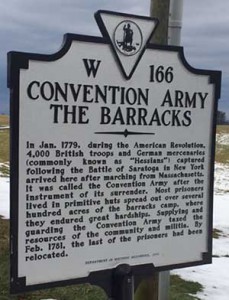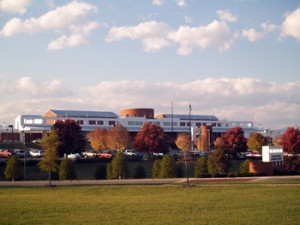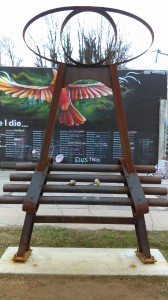We’re doing it again…if you live in Charlottesville, you probably know (and have likely seen) some of these familiar faces. But if you’re thinking about moving here and buying a home in Charlottesville, it’s only fitting you get to know some of your neighbors. Without further ado, here’s another list of famous faces ‘round the way.
John Grisham, Author, philanthropist
If you didn’t know, you’d hardly expect it out of the private, reserved Grisham, but he is one of the best-selling authors of his generation, alongside people like Agatha Christie, Dan Brown, and J.K. Rowling. Many of his works have been adapted for screens big and small, most notably The Pelican Brief, The Firm, and his first novel, A Time to Kill. He started out as a small-time lawyer in Mississippi but found a true calling in his thrilling legal dramas. He’s also a mainstay at the Virginia Festival of the Book, which comes to Charlottesville in March every year. Grisham is also a philanthropist and activist, sitting on the board of directors for the Innocence Project, donating a million annually to his alma mater Ole Miss, and, in recent years between $1 and $2 million annually through his charity, Oakwood Foundation. That is, by the way named after Oakwood, his farm in Albemarle County, in Covesville. It’s a majestic, 240-acre central Virginia estate with a horse farm and several gardens. He also owns another farm in central Virginia called Riverside. And, in the tradition of Faulkner, he is a former resident of Oxford, Mississippi who now lives in Charlottesville.
Dwayne “The Rock” Johnson, Actor, wrestler
A farm in central Virginia…not quite the place you’d expect a multimillion dollar wrestler-turned Hollywood action hero to inhabit. But if you can smell what the Rock is cookin’, it’s probably because you’re in Fluvanna, near his sprawling property east of Charlottesville. Little is known about this domicile, because years of living in the public eye has given Johnson a good idea of how to avoid it. A legion of kids grew up watching the Rock on World Wrestling Entertainment, and in addition to making him the most successful performer in that business, it helped him get the highest salary for a first-time actor in The Scorpion King. From there he was king of the The Fast and the Furious franchise, a bonafide blockbuster series in its time. Since then, the Rock has won over all the hearts that weren’t beating inside the chests of wide-eyed, angst-ridden young boys with their own TVs. He’s done this with a series of roles, some comedy, some action. We can’t tell you what the Rock really does on his Charlottesville farm, but we can tell you that he’s been spotted a few times at Gold’s Gym by various giddy locals, all of whom now have a story about how they beat the Rock in a pickup basketball game. Yea right buddy…us too.
John Kluge, Businessman, philanthropist
It’s difficult to drive through Charlottesville without seeing the Kluge brand somewhere in town. As a philanthropist and entrepreneur, John Kluge gave a lot to this city. He hailed from Chemnitz, Germany and studied economics up at Columbia University. He made most of his money in media and broadcasting, selling the television stations of his Metromedia company in 1986; these went on to form the core of Fox’s television programming. He is remembered today as a philanthropist, giving over $510 million to his alma mater. Most of that money goes to financial aid for underprivileged students, as he was once the beneficiary of scholarships. In Charlottesville, his presence is felt across a broad spectrum of public works. In 2001, he donated his 7,378 acre rural estate in Albemarle County to the University of Virginia. It remains the largest gift ever given to the university. UVa uses Morven Farm to hold classes and seminars, making the most of an opportunity to have agricultural instruction there. As an avid collector of indigenous Australian art, he helped found the Kluge-Ruhe Aboriginal Art Museum at UVa. It’s considered one of the finest indigenous Australian collections in the world, even rivaling some in Australia itself. There’s also the Kluge Children’s Rehabilitation Center (the facilities of which were recently moved by UVa and renamed the Battle Building), and the Kluge Vineyard and Estates, primarily run by his ex-wife and widow Patricia Kluge until it was bought by Donald Trump a few years ago and renamed Trump Vineyards.
Jessica Lange, Actress
Jessica Lange is routinely acknowledged as one of the finest actresses of her generation. She started out in a 1976 remake of King Kong, putting on a string of powerful performances that reinterpreted the role of the damsel-in-distress, the victimized heroine in film. She brought depth to these characters and in many cases restored a sense of autonomy that was rare in the male gaze-ridden Hollywood of the 70s and 80s. In 1982, she became the first performer (male or female) in 40 years to win two Oscar nominations in one year, for Best Actress in a Lead Role (for her portrayal of Hollywood actress Frances Farmer in Frances) and Best Supporting Actress (for her role in Tootsie). After several film roles, she made her Broadway debut playing Blanche DuBois in the Tennessee Williams magnum opus A Streetcar Named Desire. She and actor husband Sam Shepard settled down on a huge Charlottesville farm, raising their children for ten years before moving up to her native Minnesota. They also grew chickens and veggies.
Edgar Allen Poe, Author, poet
Charlottesville’s most famous dropout, Edgar Allen Poe was a master of the macabre in literature, captivating audiences with thrilling, gripping short works wherein the familiar becomes strange and uncanny shapes and characters create a distorted version of reality. Poe is widely considered to have invented the “detective mystery” genre, so someone call John Grisham and tell him to pay homage. His work is dark Romanticism, a response to the burgeoning transcendentalist aesthetic of the time; let’s just say Poe was not making any trips to Walden anytime soon. The poem “The Raven” is probably his most notable piece of work; it tells of a sentient raven and his conversation with a man in distress over unrequited love. These common themes unravel as the poem details the man’s slow descent into madness. The young Poe was orphaned early in life and bounced around places in Virginia before matriculating at UVa in 1826. He was unable to afford tuition and left after a year. There is some speculation as to where exactly his dorm at UVa was located, but most agree it was at 13 West Range. It has been preserved, and its upkeep is seen to by a collection of faculty and students known as the Raven Society. Unlike many of the members on this list (most of whom own Charlottesville farms) Poe died penniless and alone in Baltimore; the life of an avant garde artist.
Eduardo Montes-Bradley, Director, photographer, author
Now a long-time resident of the Ville, award-winning documentarian Eduardo Montes-Bradley grew up in Argentina amidst the political turmoil of the 60s and early 70s before relocating to the U.S. when he was 16. He uses various pen names for different projects. Montes-Bradley dabbled a bit in fiction in the 90s, publishing his last film in that style in 1995 and returning to documentaries in 1997 with a biographical sketch of Osvaldo Soriano, an Argentine journalist and novelist who was exiled from his home country. This eventually grew to become his signature style; indeed Montes-Bradley has crafted many of these biographical profiles, covering a wide range of figures in different fields. He’s lived in Charlottesville for a few years now and is at the helm of the Heritage Film Project at UVa. The Heritage Film Project features biographical essays of varying lengths, all about humanists, scientists, and places at the university. The most recent entry in this series is Monroe Hill, a film which traces the historical context of James Monroe’s first home on land in Albemarle County, and the thirty-year overhaul which led to the estate becoming the center of UVa. It premiered at the Virginia Film Festival earlier this year. He also did a profile of another member on this list, the poet Rita Dove entitled Rita Dove: An American Poet. It talks about the poet’s formative years and details her career in eleven parts including a “prologue” and “epilogue.” This is similar to the formal structure that Dove prefers, evident in her later works. He also contributes heavily to the Writers Made in Brazil series which profiles Brazilian authors, and the Argentine Writers Collection which does the same for Argentine authors. Of these, his film Harto the Borges is quite notable. It’s a documentary on the poet Jorge Luis Borges and includes a rare TV interview with the author. Eduardo Montes-Bradley’s work is also consistently featured in the Virginia Film Festival. Doing Cville proud, to be sure.
Rita Dove, Poet
Rita Dove is deft and versatile. Besides the throwaway designation of “contemporary poetry,” her work really does defy categorization with its breadth and scope. She writes on a variety of topics, some historical, some related to the black experience, some transcendent ideas of maternity, family, the human memory, and love. She is the first African-American Poet Laureate (Robert Hayden held the title before they changed the name), and she’s also a Pulitzer Prize winner and Poet Laureate of Virginia. Her work is very aware and definitely addresses subjects that aren’t very easy to discuss, like bodies and body image. As far as Charlottesville goes, she started teaching here in 1993 and has held the chair of the Commonwealth Professor of English since then. On Grounds (the Charlottesville word for “campus”) she is known for being friendly and approachable, especially with regards to English students, to whom she gives thoughtful, constructive advice. She and her husband Fred Viebahn, a German writer live together outside Charlottesville, on land in Albemarle County.
Chris Long, Pro NFL Defensive End
It was tough to decide between writing about pro Hall of Famer Howie Long or his son Chris, but only one of these men has a Little John’s sub which bears his name, and upon that consideration, the choice was much easier. Chris had some big shoes to fill, but he appears to be doing just fine as the second overall draft pick for the St. Louis Rams in the 2008 NFL Draft. He attended St. Anne’s-Belfield, an independent K-12 day school on 49 acres of land in Charlottesville. In addition to football, he played basketball, lacrosse, and baseball. He matriculated at UVa in 2004 and quickly matured into one of the premier defensive forces in the country, ending his college career all-ACC honors, as team captain, and with 8.3 tackles per game…did we mention they named a sandwich after him? On the Rams, his sheer athleticism is utilized as both defensive end and linebacker, and he got his first sack ever against N.Y. Giants QB Eli Manning. To our knowledge, Eli Manning does not have a sandwich named after him. Manning could not be reached for further comment.
Rob Lowe, Actor
Rob Lowe is a Charlottesville native, born here while his father was attending UVa’s law school. From there it was Dayton, Ohio, Malibu, California, and the life of an actor. His breakout role was in Francis Ford Coppola’s The Outsiders, and he went on to cultivate a pretty successful career on both screens. Everyone remembers his role in The West Wing; he played Deputy White House Communications Director Sam Seaborn, who starts out as the main protagonist of the series for the first few seasons until Martin Sheen’s President Bartlet character took over the focus of the show. He was also in Brothers and Sisters, and more recently he’s enjoyed a resurgence of popularity after being cast as the high-energy Chris Traeger in NBC’s hit show Parks and Recreations. Not bad for a guy who spent his early years crawling around Charlottesville in his poopy diapers.
 Albemarle Barracks: A Piece of the Revolution Lives in Charlottesville
Albemarle Barracks: A Piece of the Revolution Lives in Charlottesville 

 If we’re being honest with ourselves, no one actually likes flying. Or at least, no one actually likes the process of flying. Once you get up into the air it’s all gravy, but this writer has never been a fan of the hustle and bustle of the terminal, the anxiety that stems from baggage claim, or the Greek tragedy that is terminal parking. The good news is that seven-odd miles north of the city, the Charlottesville Airport (CHO) makes travel convenient. Celebrating its 60th anniversary less than a year ago, this relatively small public-use airport has been operating commercial flights since 1955. It generally has about 46 non-stop flights every day, to six major cities. The period between August 2014 and July 2015 saw the airport handle an estimated 261,050 passengers (or enplanements), up from 197,776 in 2010…and this is just with one runway! Though Charlottesville is still fairly convenient to major airports like Richmond and Dulles, there’s nothing like flying into your home in Charlottesville and getting a quick ride up or down 29, especially after a long journey.
If we’re being honest with ourselves, no one actually likes flying. Or at least, no one actually likes the process of flying. Once you get up into the air it’s all gravy, but this writer has never been a fan of the hustle and bustle of the terminal, the anxiety that stems from baggage claim, or the Greek tragedy that is terminal parking. The good news is that seven-odd miles north of the city, the Charlottesville Airport (CHO) makes travel convenient. Celebrating its 60th anniversary less than a year ago, this relatively small public-use airport has been operating commercial flights since 1955. It generally has about 46 non-stop flights every day, to six major cities. The period between August 2014 and July 2015 saw the airport handle an estimated 261,050 passengers (or enplanements), up from 197,776 in 2010…and this is just with one runway! Though Charlottesville is still fairly convenient to major airports like Richmond and Dulles, there’s nothing like flying into your home in Charlottesville and getting a quick ride up or down 29, especially after a long journey. When we think of living in Charlottesville, our minds tend to conjure up of images of vineyards, breweries, restaurants, sporting events, and high-profile concerts. But there are a few unconventional, out-of-the-way places that have found a home in Charlottesville. We’ll share our favorites here.
When we think of living in Charlottesville, our minds tend to conjure up of images of vineyards, breweries, restaurants, sporting events, and high-profile concerts. But there are a few unconventional, out-of-the-way places that have found a home in Charlottesville. We’ll share our favorites here.